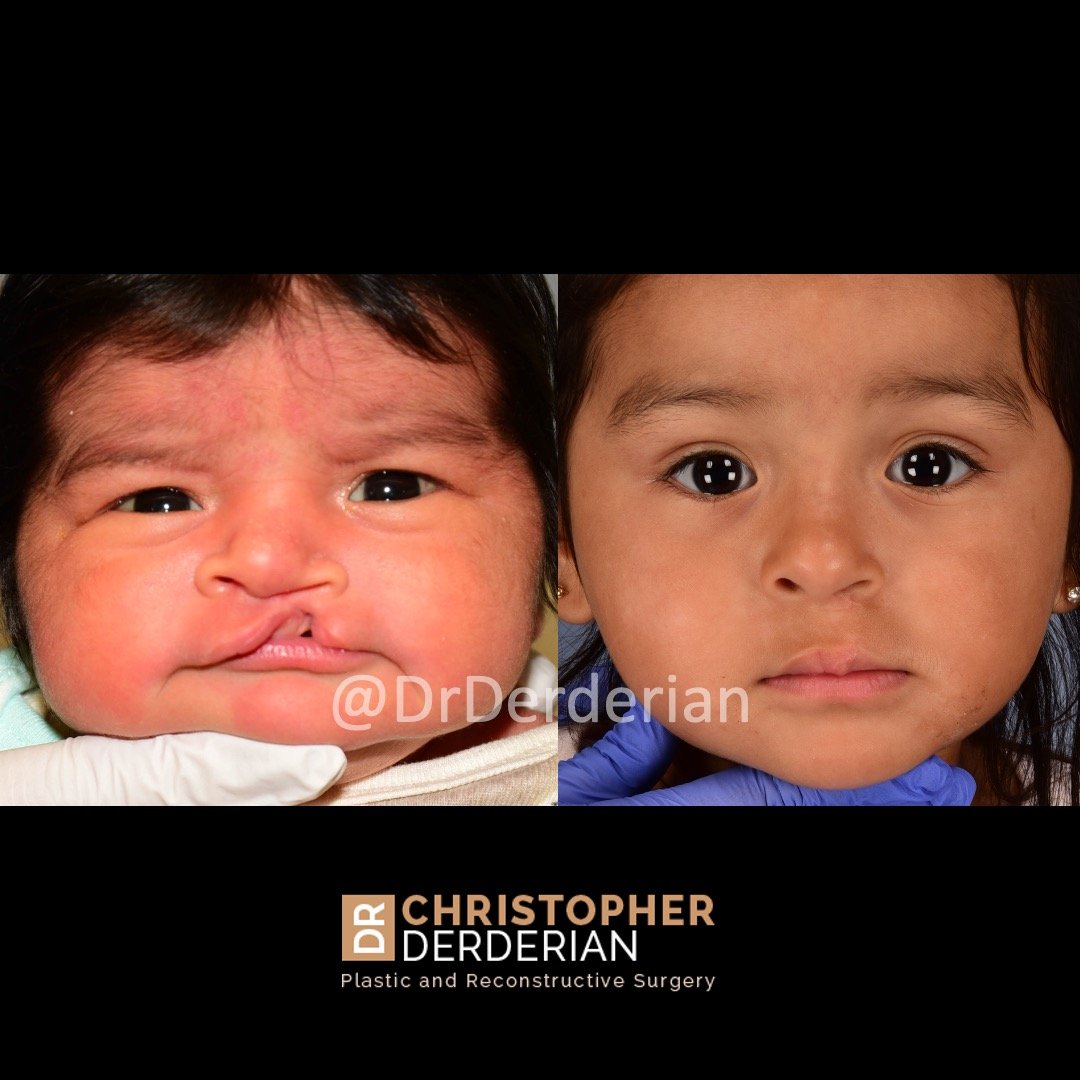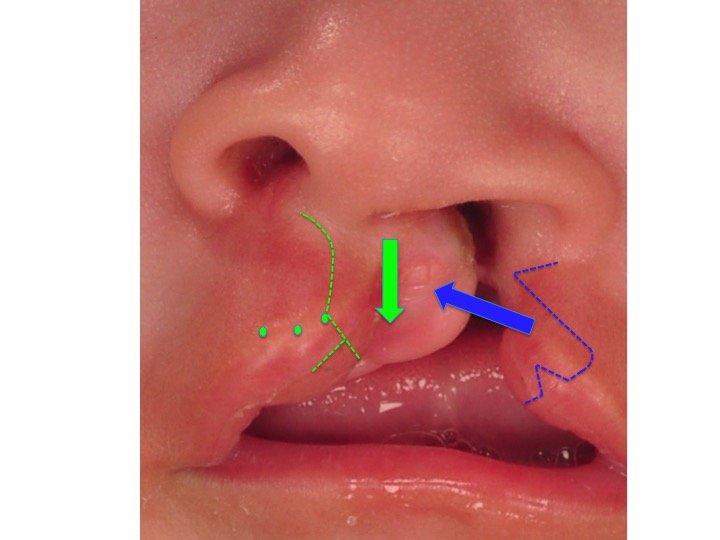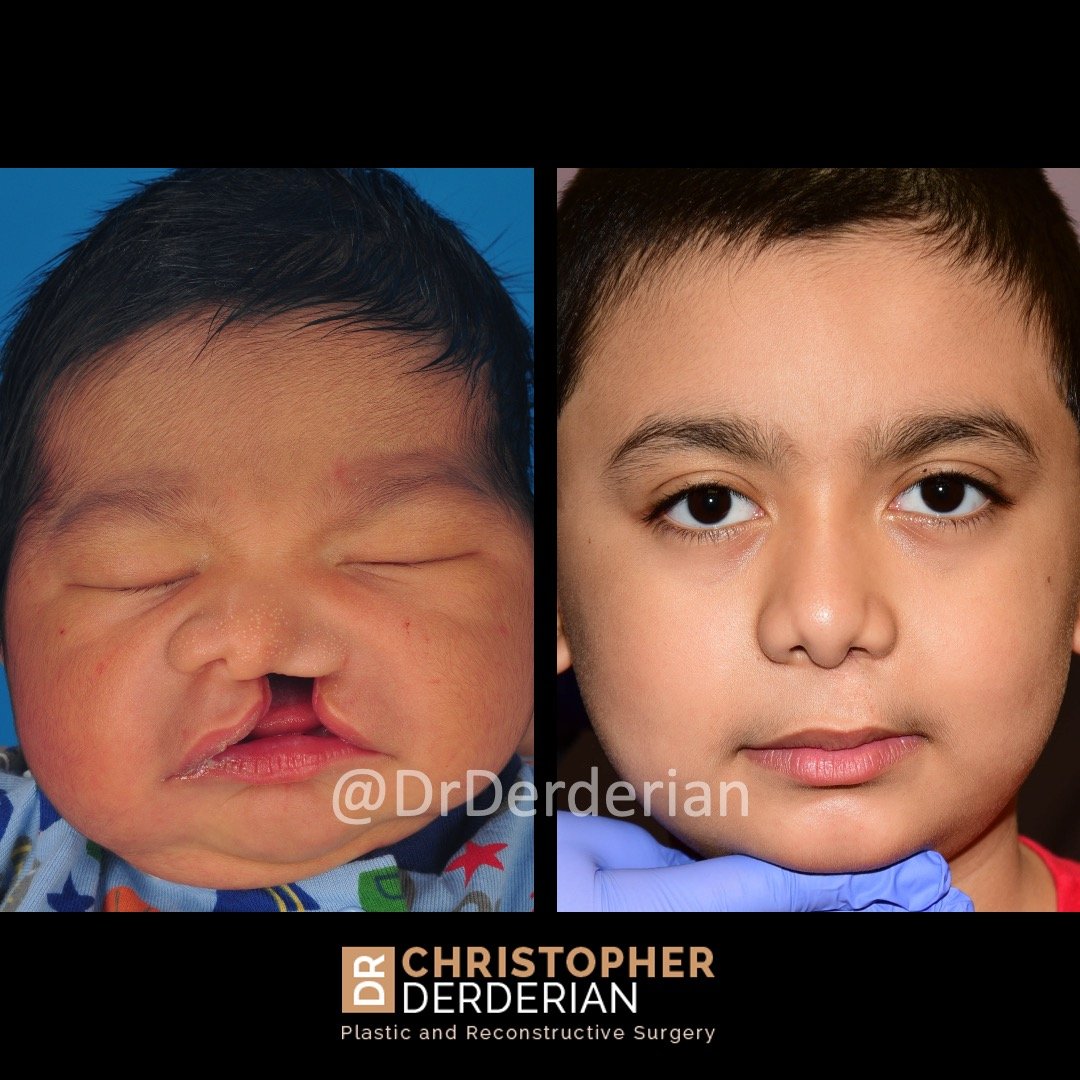Unilateral Cleft Lip
& Cleft Palate
Unilateral cleft lip is present when there is a gap on one side of the lip. Nine out of ten patients (90%) with a cleft of the lip have unilateral cleft lip. Unilateral cleft lip is twice as common on the left side as it is on the right. There is a spectrum of severity of clefts of the lip depending on how much of the lip, gums and palate are involved. The majority of cleft lips involve the gums and palate.
In the least severe form of unilateral cleft lip, the cleft involves only a minor irregularity of the lip. This minor irregularity can present as a ridge or intact skin irregularity along the philtral column or may be more limited such as a notch in or just above the red portion of the lip. This type of cleft lip the where the lip is intact with only minor irregularities is called a microform cleft lip (seen on the left side of the figure above).
An incomplete cleft lip involves a separation through all three layers of the lip - the skin, muscle and pink intraoral part (mucosa). An incomplete cleft lip can involve any amount of the vertical height of the lip (1/4, 1/2, 3/4) and can extend up to, but does not involve, the floor of the nostril.
Complete cleft lip involves a separation through all three layers of the lip (the skin, muscle and mucosa) extending through the entire height of the lip and through the floor of the nostril. This cleft usually extends through the gums (alveolus) and the palate also, but occasionally involves only the gums with an intact palate.
Patients with complete cleft lip and palate have the most severe changes in the appearance of the lip and nose. The cleft in the bones of the gums and palate results in separation of the bones that creates a wide gap that separates the lip segments and drastically changes the shape of the nose.
The impact of the cleft involving the floor of the nostril and the underlying facial skeleton is visible in the above images of the nose. The changes in the nasal shape of the infants with clefts of the alveolus (gums) alone and combined alveolus and palate are significantly more severe than those of the incomplete clefts because of the movement of the facial bones. Movement of the facial bones widens the cleft lip and causes an uneven and widened foundation for the nose to sit on.
-
Cleft lip is typically repaired at 3 -4 months of age. Most patients in my practice receive nasoalveolar molding (NAM) by Dr. Yongjong Park, our dedicated craniofacial orthodontist. NAM is used to help align the gums, narrow the cleft and reshape the nose on the side of the cleft. NAM is complete by age 3-4 months. We also wait until age 3-4 months to allow the babies to grow so they will less physiologically challenged by the operation. The operation takes 3-4 hours depending on whether or not the hard palate is closed at the time of the lip repair. The patients look improved immediately after the surgery. The majority of patients stay overnight in the hospital for 1 night to make sure they are drinking well before they go home. Prescribed pain medicine is typically used for 2-3 days. Some sutures are removed after 5-7 days. Scar care is discussed in detail at the time of suture removal. The figure below demonstrates typical incisions design for a cleft lip repair to hide the scars in the normal features of the lip.








